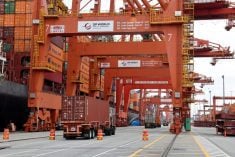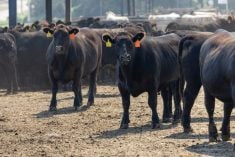By Theopolis Waters
CHICAGO, June 24 (Reuters) – The price of select-grade U.S. beef at wholesale rose to an all-time high on Tuesday, fueled by a prolonged shortage of cattle and grocers gearing up for the summer grilling season, analysts said.
Select beef is typically less expensive than Choice cuts because it is leaner and has less marbling, or fat, associated with juiciness.
Beef demand typically wanes during the summer doldrums, prompting consumers to turn to lighter meals. Still, its cost is expected to remain historically high through the end of 2014 after years of drought trimmed the herd to a 63-year low of 87.730 million head.
Read Also

Canadian trade data delayed by U.S. government shutdown
Canadian international trade data for September will be delayed indefinitely due to the ongoing partial shutdown of the United States government, Statistics Canada said Friday, Oct. 24.
The morning’s wholesale price, or cutout, for Select beef hit $238.19 per hundredweight (cwt), eclipsing the previous record of $237.71 in March, according to the U.S. Department of Agriculture.
“We’re looking at weather improving across a wide portion of U.S., and with that we have cut into the grilling season a little,” said Citigroup futures specialist Sterling Smith.
Retailers stepped up their beef purchases given better weather in the coming weeks for outdoor cookouts, which will help boost consumption among grocery shoppers, he said.
Dennis Burson, extension meat specialist with the University of Nebraska at Lincoln, in part attributed the run-up in prices to drought-stricken cattle supplies and heifers held back to rebuild the cattle herd.
In May, retail beef prices climbed to $5.91 per lb, topping the $5.87 April record, according to USDA.
“The big question is does demand stay at the same level or will high prices drive people away from eating those products,” he said.














